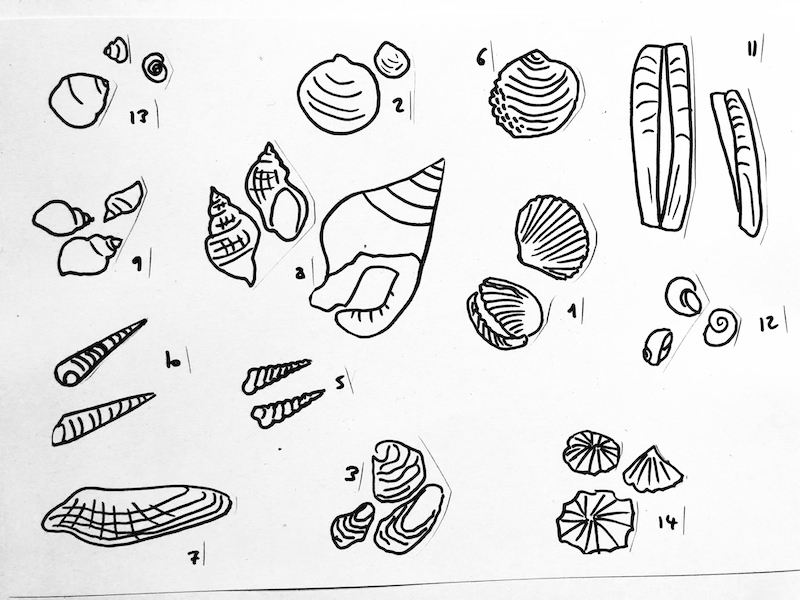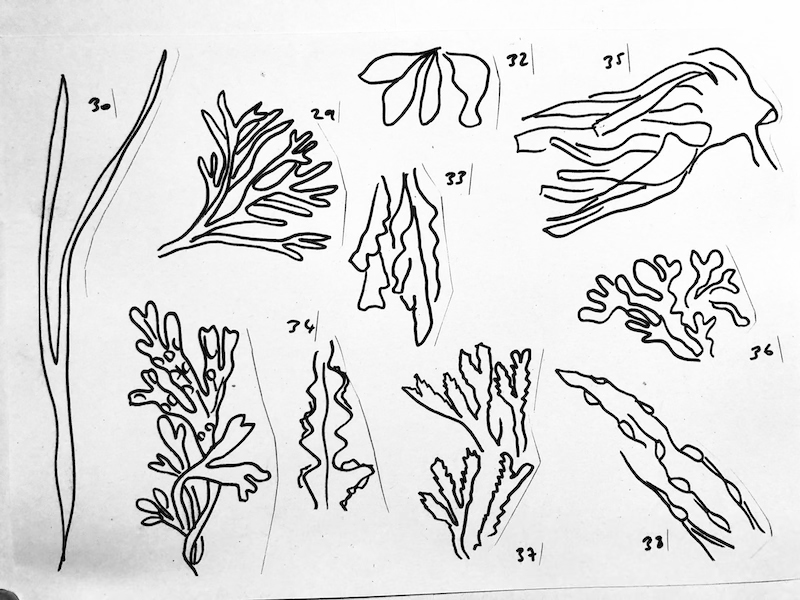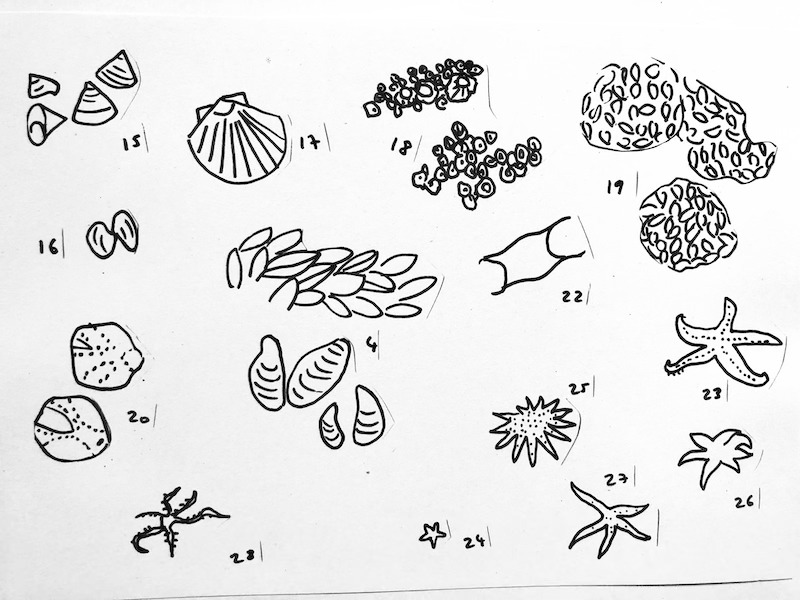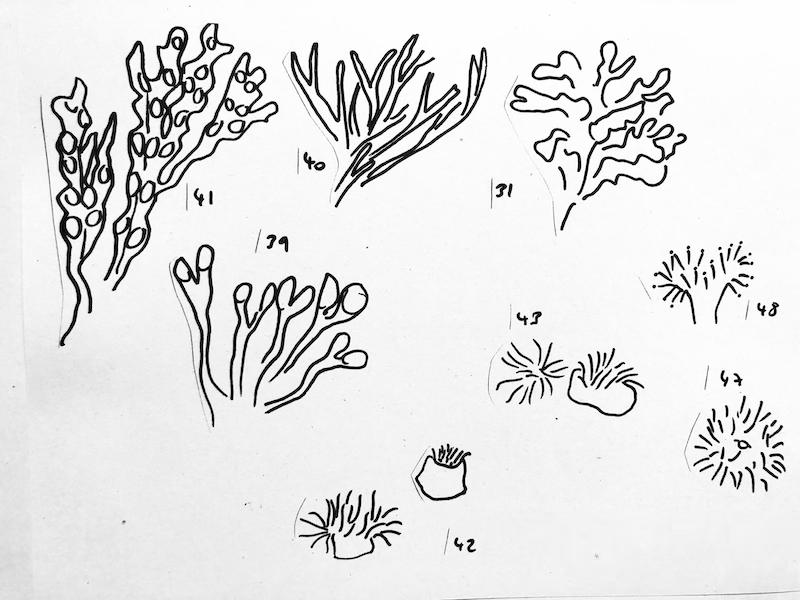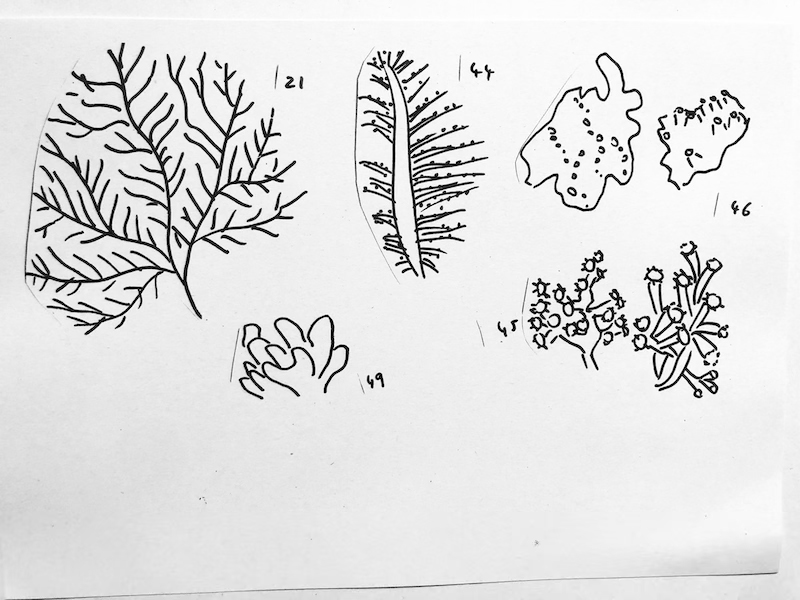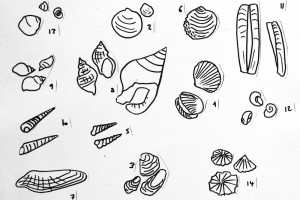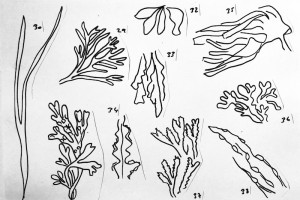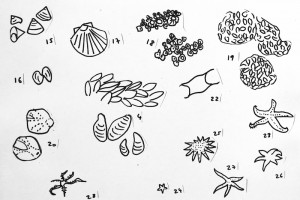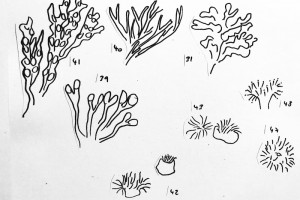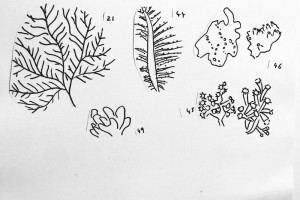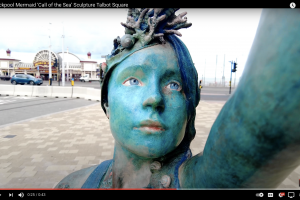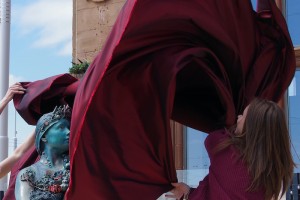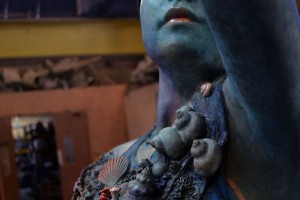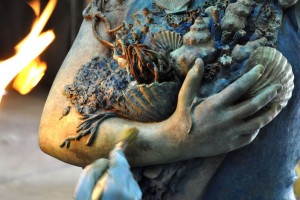Images of local shells and sea life:
1. Common cockle. Images. (Fan-shaped shell with radiating ribs up to 5cm across. Widely distributed in estuaries and sandy bays – up to 10,000 per m²)
2. Dog Cockle. Images
3. Common Oyster. Images. (Oval or pear-shaped shell up to 11cm across. The two halves of shell are very different – one smooth and flat, the other rough and concave. Widely distributed but less common on east coast):
4. Mussel. Images (Purple or blue shell, 5-10cm long when adult. Very common on all coasts on intertidal rocks):
5. Tower shell. Images
6. Warty venus. Images
7. Piddocks. Images (angels wings)
8. Common whelk. Images (Yellow-brown spiralling shell up to 10cm high and 6cm wide. Very common. Mobile, the common whelk preys on small bivalves):
9. Dog whelk (Spired, up to 6cm long, in cream, yellow or grey. Common on all rocky coasts where it feeds on mussels and barnacles). Images
10. Auger shell (or Terebridae, or Auger snail) Tall, spindly cone up to 3cm long. Common anywhere with muddy sediments except for the south-east coast of England). Images
11. Common Razor clam (Unmistakable slender shell up to 25cm long – very common on sandy bays and estuaries. Often washed up in vast numbers after storms).
12. Flat periwinkle (Small, vari-coloured whorled shell up to 1.5cm – from olive-green to brown, red and yellow. Common wherever kelp occurs). Images, Common periwinkle (Black or grey conical shell up to 5cm in height. Found everywhere, particularly rocky coasts). Images
13. Grey top shell (Small whorled shell, 1.7cm across. Grey or light-yellow with brown or purple streaks. Common on all coasts): Images
14. Common limpet (Familiar conical shell in grey or white with radiating ridges up to 6cm high. Found on rocky shores). Images
15. Painted top shell (Conical violet/pink and brown streaked shell, up to 3cm high. Very common on seaweed-covered rocky shores). Images
16. Thin tellin (Brittle, flattened shell up to 3cm long in shades of pink and yellow. Common on sandy shores):
17. Great Scallop. Images. (very flat red – mamie)
18. Acorn Barnacles. Images
19. Common Whelk egg cases. Images
20. Sea Potato. Images
21. Pink sea fan skeleton. Images Pink Sea Fan. Images (vulnerable status)
22. Mermaid’s purse. Images
23. Common starfish. Images
24. Cushion star. Images
25. Common sunstar. Images
26. Seven Arm starfish. Images
27. Bloody Mary starfish. Images
28. Brittlestar. Images
29. Velvet Horn. Images. (tubular seaweed – not too floppy)
30. Thong weed. Images. (very long – too long?)
31. Carrageen. Images (Irish moss)
32. Red Rags. Images (big leave. Nice red colour)
33. Sea Lettuce. Images (like green lettuce)
34. Sugar kelp. Images (very large frilly)
36. Horn wrack. Images (good for head wear?) not actually seaweed but colony of animals
37. Serrated wrack. Images (serrated edges)
38. Egg Wrack. Images (similar to Knotted wrack)
39. Spiral wrack. Images
40. Channelled wrack. Images (Channel Wrack, Cow tang)
41. Bladder wrack. Images
42. Beadlet anemone. Images. (bright red, close completely when outside of water)
43. Snakelocks anemone. Images. (see image on beach)
44. Phosphorescent sea pen. Images (in decline)
45. Lophelia Pertusa. Images (eye coral, spider hazard)
46. Breadcrumb sponge. Images
47. Dahlia anemone . Images
48. Jewel anemone. Images
49. Dead Man’s fingers. Images

